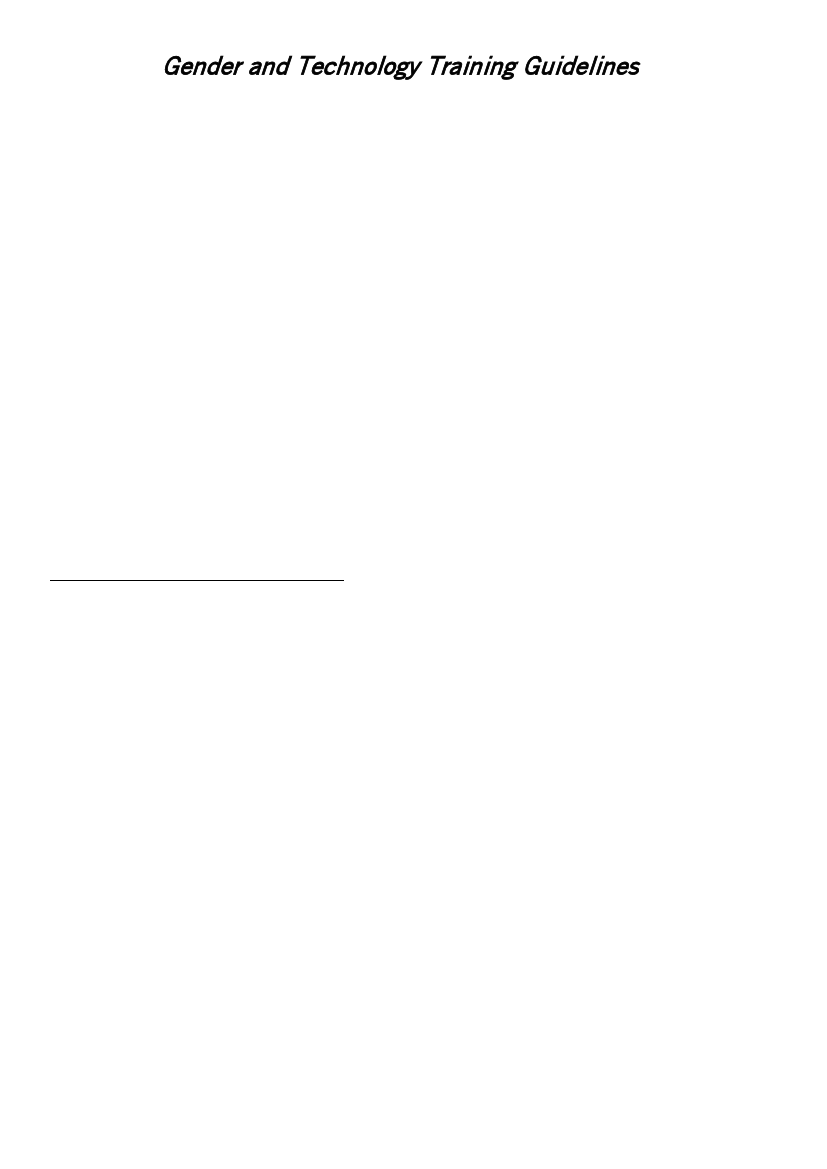
Gender and Technology Training Guidelines
STEP 5 ANALYSING GENDER NEEDS AND INTERESTS
Practical Gender needs. These are the immediate and practical daily needs such as food,
water, housing, income, health etc. and the conditions in which women and men live.
They are unique to specific contexts, and can be addressed by provision of specific
outputs. Practical gender needs do not challenge the divisions of labour and
women’s subordinate position in society. Meeting women’s practical needs improves
their ability to carry out traditional roles and responsibilities, but does not alter
gender relations in a society.
Strategic needs - These are long term issues that almost all women (and men) face. They
relate to women’s disadvantaged position, lack of power, education, resources etc.
Strategic needs vary according to context and are related to the gender division of
labour, power and control. They include issues such as legal rights, domestic
violence and equal wages. Strategic gender needs can be addressed by increasing
women’s self confidence, education, organisation etc. to ensure that women are in
control of their development. Meeting women’s strategic needs means empowering
women, challenging their subordinate position and transforming relationships.
It is important to identify practical and strategic needs before planning a project.
Key issues for technological intervention
What practical needs of women will be met by the use of the technology?
What practical concerns of women could have a negative/positive impact on
the project?
How could the position of women in the community and within the household,
affect the goals of the project?
Are there any strategic needs of women that the project can address?
What impact will the project activities have on women’s position in the
community and within the household?
What could be the community’s response to meeting the strategic needs of
women?
How will the changes in the roles and position of women be made
sustainable?
STEP 6 - PLAN THE INTERVENTION
Now you have all the information to design a gender sensitive project!
Identify the objectives of the project.
List the activities that it will carry out.
SESSION 19 – Handout
86